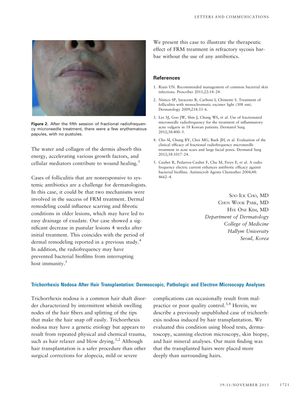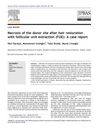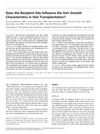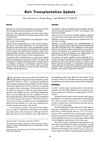Trichorrhexis Nodosa After Hair Transplantation: Dermoscopic, Pathologic and Electron Microscopy Analyses
November 2013
in “
Dermatologic Surgery
”

TLDR Hair transplant complications were likely due to deep graft placement and rough handling.
The document described a case where a 38-year-old man developed trichorrhexis nodosa, characterized by hair breakage and lack of growth, three years post hair transplantation. Dermoscopic examination showed whitish nodes and split ends, while electron microscopy revealed a "crushed paint brush" pattern on the hair shaft. Histopathologic examination found moderate inflammation and noted that transplanted hairs were placed deeper than normal hairs. The patient's blood and hair mineral levels were normal. The study concluded that the disorder was likely caused by the deep placement of hair grafts and poor handling during the transplantation, leading to mechanical stress on the follicles. It highlighted the need for careful graft handling and depth placement to avoid such issues.



